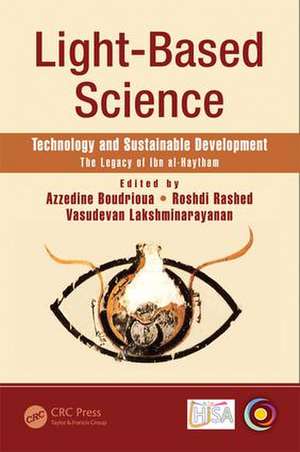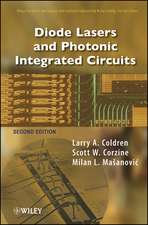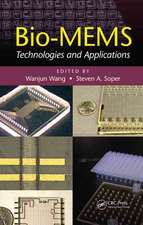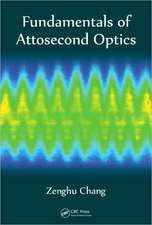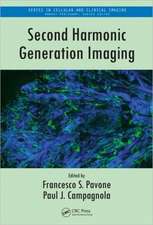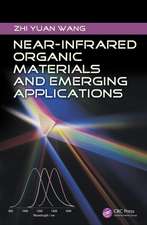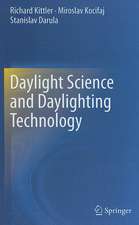Light-Based Science: Technology and Sustainable Development, The Legacy of Ibn al-Haytham
Editat de Azzedine Boudrioua, Roshdi Rashed, Vasudevan Lakshminarayananen Limba Engleză Hardback – 16 aug 2017
| Toate formatele și edițiile | Preț | Express |
|---|---|---|
| Paperback (1) | 370.25 lei 6-8 săpt. | |
| CRC Press – 12 dec 2019 | 370.25 lei 6-8 săpt. | |
| Hardback (1) | 850.99 lei 6-8 săpt. | |
| CRC Press – 16 aug 2017 | 850.99 lei 6-8 săpt. |
Preț: 850.99 lei
Preț vechi: 1142.37 lei
-26% Nou
Puncte Express: 1276
Preț estimativ în valută:
162.85€ • 170.23$ • 137.61£
162.85€ • 170.23$ • 137.61£
Carte tipărită la comandă
Livrare economică 06-20 martie
Preluare comenzi: 021 569.72.76
Specificații
ISBN-13: 9781498779388
ISBN-10: 1498779387
Pagini: 281
Ilustrații: 52
Dimensiuni: 156 x 234 x 22 mm
Greutate: 0.64 kg
Ediția:1
Editura: CRC Press
Colecția CRC Press
ISBN-10: 1498779387
Pagini: 281
Ilustrații: 52
Dimensiuni: 156 x 234 x 22 mm
Greutate: 0.64 kg
Ediția:1
Editura: CRC Press
Colecția CRC Press
Public țintă
Professional Practice & DevelopmentCuprins
Preface
John Dudley
Introduction
Azzedine Boudrioua
Part One: History Guiding the Future, example of Ibn al Haytham
Chapter One: Ibn al Haytham’s Scientific Program
Roshdi Rashed
Chapter Two: Science, Philosophy and religion during the 10th century
Josef Van Ess
Chapter Three: From the Reasons of Light to the Lights of Reason: Remarks on the Nine Centuries Distant Ibn al Haytham’s and Albert Einstein’s Respective Approaches of Light as Conceived Physically
Michel Paty
Chapter Four: Translation and Studies of Ibn al Haytham’s Optics in Latin
Paul Pietquin
Chapter Five: Ibn Al-Haytham: The Founder of Scientific Pluralism
Hassan Tahiri (Portugal)
Chapter Six: The Famous Problem of Ibn al Haytham
Pierre Coullet
Chapter Seven: Ibn Al-Haytham: Founder of Physiological Optics?
Vasudevan Lakshminarayanan
Chapter Eight: Al Haytham's Influence on the Optics and Culture of Medieval Europe
Charles Falco
Part Two: Light-based technologies for the future
Chapter Nine: Photonic Technology: Recent Developments and Challenges of the 21st Century
Azzedine Boudrioua
Chapter Ten: Ibn al Haytham’s: From Basra, Earth to the Gale Crater, Mars
Noureddine Melikechi
Chapter Eleven: Modern electron optics and the search for more light: the legacy of Ibn al-Haytham
Mohamed El-Gomati
Chapter Twelve: Atomic-scale time with new light sources
Majed Chergui
Chapter Thirteen: The relevance of LED lighting for sustainable development
Harry Verhaar
Chapter Fourteen: Medieval Arab Achievements in Optics
Sameen Ahmed Khan
Part Three: Optics and Photonics in the Arab and Islamic world, Education and Investment in Light Sciences and Technology
Chapter Fifteen: Need to Create International Science Centres in Arab Countries"
Azher Majid Siddiqui and Sameen Ahmed Khan
Chapter Sixteen: The First Synchrotron Light-Source in the Middle-East and Neighbouring Regions
Gihan Kamel
Chapter Seventeen: Scientific Translation: A Tool from Shadow to Light
AbdulAziz Alswailem
Chapter Eighteen: Optics and Photonics Research in Lebanon: Key figures, Ways Forward
Marie Abboud
Conclusion
John Dudley
Introduction
Azzedine Boudrioua
Part One: History Guiding the Future, example of Ibn al Haytham
Chapter One: Ibn al Haytham’s Scientific Program
Roshdi Rashed
Chapter Two: Science, Philosophy and religion during the 10th century
Josef Van Ess
Chapter Three: From the Reasons of Light to the Lights of Reason: Remarks on the Nine Centuries Distant Ibn al Haytham’s and Albert Einstein’s Respective Approaches of Light as Conceived Physically
Michel Paty
Chapter Four: Translation and Studies of Ibn al Haytham’s Optics in Latin
Paul Pietquin
Chapter Five: Ibn Al-Haytham: The Founder of Scientific Pluralism
Hassan Tahiri (Portugal)
Chapter Six: The Famous Problem of Ibn al Haytham
Pierre Coullet
Chapter Seven: Ibn Al-Haytham: Founder of Physiological Optics?
Vasudevan Lakshminarayanan
Chapter Eight: Al Haytham's Influence on the Optics and Culture of Medieval Europe
Charles Falco
Part Two: Light-based technologies for the future
Chapter Nine: Photonic Technology: Recent Developments and Challenges of the 21st Century
Azzedine Boudrioua
Chapter Ten: Ibn al Haytham’s: From Basra, Earth to the Gale Crater, Mars
Noureddine Melikechi
Chapter Eleven: Modern electron optics and the search for more light: the legacy of Ibn al-Haytham
Mohamed El-Gomati
Chapter Twelve: Atomic-scale time with new light sources
Majed Chergui
Chapter Thirteen: The relevance of LED lighting for sustainable development
Harry Verhaar
Chapter Fourteen: Medieval Arab Achievements in Optics
Sameen Ahmed Khan
Part Three: Optics and Photonics in the Arab and Islamic world, Education and Investment in Light Sciences and Technology
Chapter Fifteen: Need to Create International Science Centres in Arab Countries"
Azher Majid Siddiqui and Sameen Ahmed Khan
Chapter Sixteen: The First Synchrotron Light-Source in the Middle-East and Neighbouring Regions
Gihan Kamel
Chapter Seventeen: Scientific Translation: A Tool from Shadow to Light
AbdulAziz Alswailem
Chapter Eighteen: Optics and Photonics Research in Lebanon: Key figures, Ways Forward
Marie Abboud
Conclusion
Recenzii
"I enjoyed reading this book written by world-leading scientists and historians with much experience in the history of science in general and science of optics; this is the main strength of this book. Another strong aspect of the book is that it's an international collective effort, containing contributions from people with multi-cultural and multi-faith backgrounds."
—Ali Al-Kamli, Jazan University, Saudi Arabia
"… a true presentation of the journey of science of light, starting with the pioneering works on optics by Ibn al-Haytham – an Arab mathematician and physicist, a thousand years back, and the influence of his scientific methods on the European renaissance. Ibn al Haytham was like a pole star, whose light guided the future scientists like Newton, Fresnel, Maxwell, Einstein and many others to unravel the mysteries of light."
—Zahid H. Khan, Jamia Millia Islamia, New Delhi, India
"This book is very interesting: short complementary sections with high-level information on science evolution, technology and development over time and over space."
—Zohra ben Lakhdar, Faculty of Science in Tunis, Tunisia
"The broad approach includes cultural, social and historical aspects of light-based science and technology, and the chapters are written by international scholars with a wide range of backgrounds. The book will be very valuable to science historians, and people working in optics, photonics, vision science and many other light-based technologies."
—Alexander A. Sawchuk, University of Southern California, USA
"This book contains the contributor’s presentations at a 2015 conference to celebrate the legacy of Ibn al-Haytham (965-1040)—specifically, his philosophical, mathematical and experimental works as contained in the first three extant books of his Book of Optics. For readers who are not familiar with the translations and extensive scholarly commentary of A. I. Sabra, and A. Mark Smith, this book is a recommended
"This books explores the pervasive influence of light in science, technology, policy and education. It covers Ibn al-Haytham’s optics, light-emitting-diode lighting for sustainable development, global and atomic-scale time with new light sources, advanced technology and vision science. Cutting-edge optical technologies are presented, and challenges for renewable energy, the global impact of photonics, and optical and photonic education technology are addressed in detail. Practical examples and illustrations are provided throughout the text. This book is written as a multidisciplinary reference book by leading scholars in the history of science and photonics."
- Nature Photonics, USA
—Ali Al-Kamli, Jazan University, Saudi Arabia
"… a true presentation of the journey of science of light, starting with the pioneering works on optics by Ibn al-Haytham – an Arab mathematician and physicist, a thousand years back, and the influence of his scientific methods on the European renaissance. Ibn al Haytham was like a pole star, whose light guided the future scientists like Newton, Fresnel, Maxwell, Einstein and many others to unravel the mysteries of light."
—Zahid H. Khan, Jamia Millia Islamia, New Delhi, India
"This book is very interesting: short complementary sections with high-level information on science evolution, technology and development over time and over space."
—Zohra ben Lakhdar, Faculty of Science in Tunis, Tunisia
"The broad approach includes cultural, social and historical aspects of light-based science and technology, and the chapters are written by international scholars with a wide range of backgrounds. The book will be very valuable to science historians, and people working in optics, photonics, vision science and many other light-based technologies."
—Alexander A. Sawchuk, University of Southern California, USA
"This book contains the contributor’s presentations at a 2015 conference to celebrate the legacy of Ibn al-Haytham (965-1040)—specifically, his philosophical, mathematical and experimental works as contained in the first three extant books of his Book of Optics. For readers who are not familiar with the translations and extensive scholarly commentary of A. I. Sabra, and A. Mark Smith, this book is a recommended
"This books explores the pervasive influence of light in science, technology, policy and education. It covers Ibn al-Haytham’s optics, light-emitting-diode lighting for sustainable development, global and atomic-scale time with new light sources, advanced technology and vision science. Cutting-edge optical technologies are presented, and challenges for renewable energy, the global impact of photonics, and optical and photonic education technology are addressed in detail. Practical examples and illustrations are provided throughout the text. This book is written as a multidisciplinary reference book by leading scholars in the history of science and photonics."
- Nature Photonics, USA
Descriere
This book discusses light-based science, emphasising its pervasive influence in science, policy, and education.
